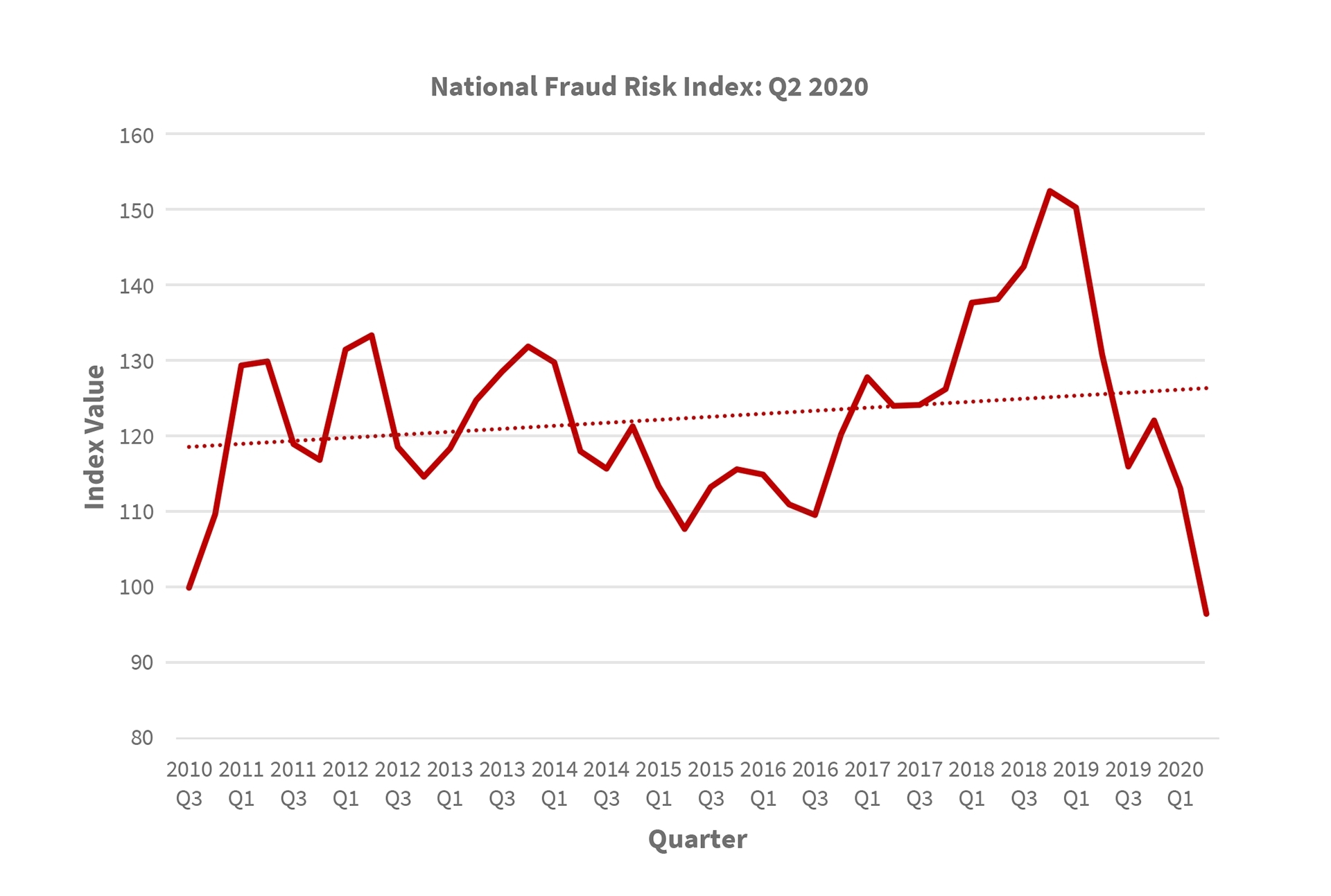 CoreLogic’s latest Mortgage Fraud Report shows a 37.2% year-over-year increase in fraud risk at the end of Q2 2021, as measured by the company’s Mortgage Application Fraud Risk Index. The significant increase for mid-2021 follows a large drop seen in 2020—a decrease driven mainly by the surge in traditionally low-risk refinances during the pandemic. The current risk level is similar to findings last seen in mid-2019.
CoreLogic’s latest Mortgage Fraud Report shows a 37.2% year-over-year increase in fraud risk at the end of Q2 2021, as measured by the company’s Mortgage Application Fraud Risk Index. The significant increase for mid-2021 follows a large drop seen in 2020—a decrease driven mainly by the surge in traditionally low-risk refinances during the pandemic. The current risk level is similar to findings last seen in mid-2019.
During Q2, an estimated 0.83% of all mortgage applications contained fraud, approximately one in 120 applications. By comparison, in Q2 of 2020, the estimate was 0.61%, or approximately one in 164 applications. Continued low mortgage rates and a record volume of refinances pushed overall fraud risk down; however, risk in the purchase segment increased 6%, with investment properties driving the highest risk in both purchase and refinance populations.
Redfin recently reported that in September, demand for second homes and investment properties was 60% higher than it was before the pandemic, according to an analysis of mortgage-rate lock data from real estate analytics firm Optimal Blue. The popularity of vacation homes skyrocketed at the onset of the pandemic, with many opting to abandon city-life and work remotely. But, the surge in demand for second homes started to wane, as cities lifted stay-at-home restrictions, the initial shock of the pandemic faded, spring homebuying season ended, the vaccination rollout increased, and the overall housing market began to cool.
“Refinance opportunities that surged lending volumes during the pandemic may be winding down,” said Ann Regan, Executive, Product Management at CoreLogic. “The outlook is for fewer low-risk refinances compared to purchases and cash-out refinances, which translates to a higher-risk environment for fraud.”

Nationally, most fraud types showed increased risk. Transaction risk showed an increase of 34.2% year-over-year. Income and property fraud risk decreased slightly, aligning with the strong job market and home price growth.
The top five states for risk increases include: South Dakota, Washington, Alaska, Vermont, and West Virginia. Less-populous states are more volatile due to lower levels of lending activity. These states all had below-average index values in 2020. Nevada moved into the top position for mortgage application fraud risk, with New York, Hawaii, Florida, and California rounding out the top five.
Click here to view the full CoreLogic Mortgage Fraud Report.

 DSNews The homepage of the servicing industry
DSNews The homepage of the servicing industry









